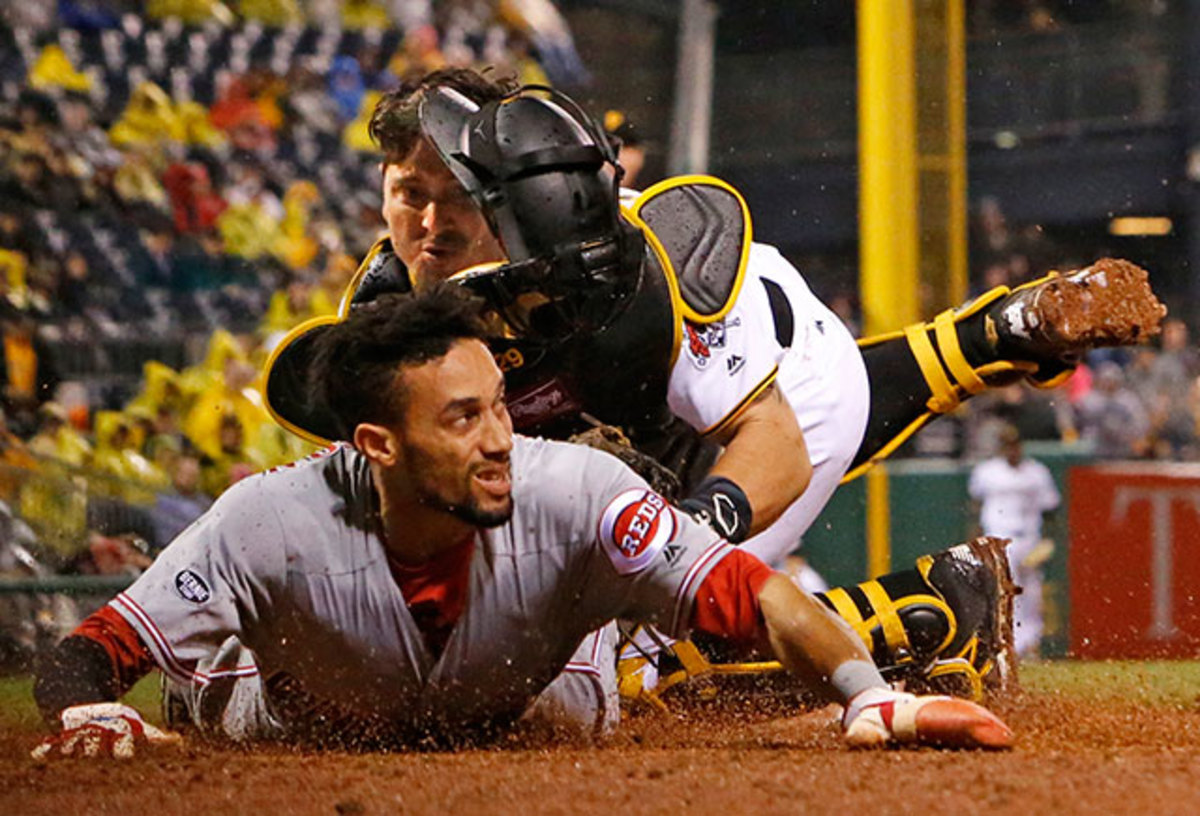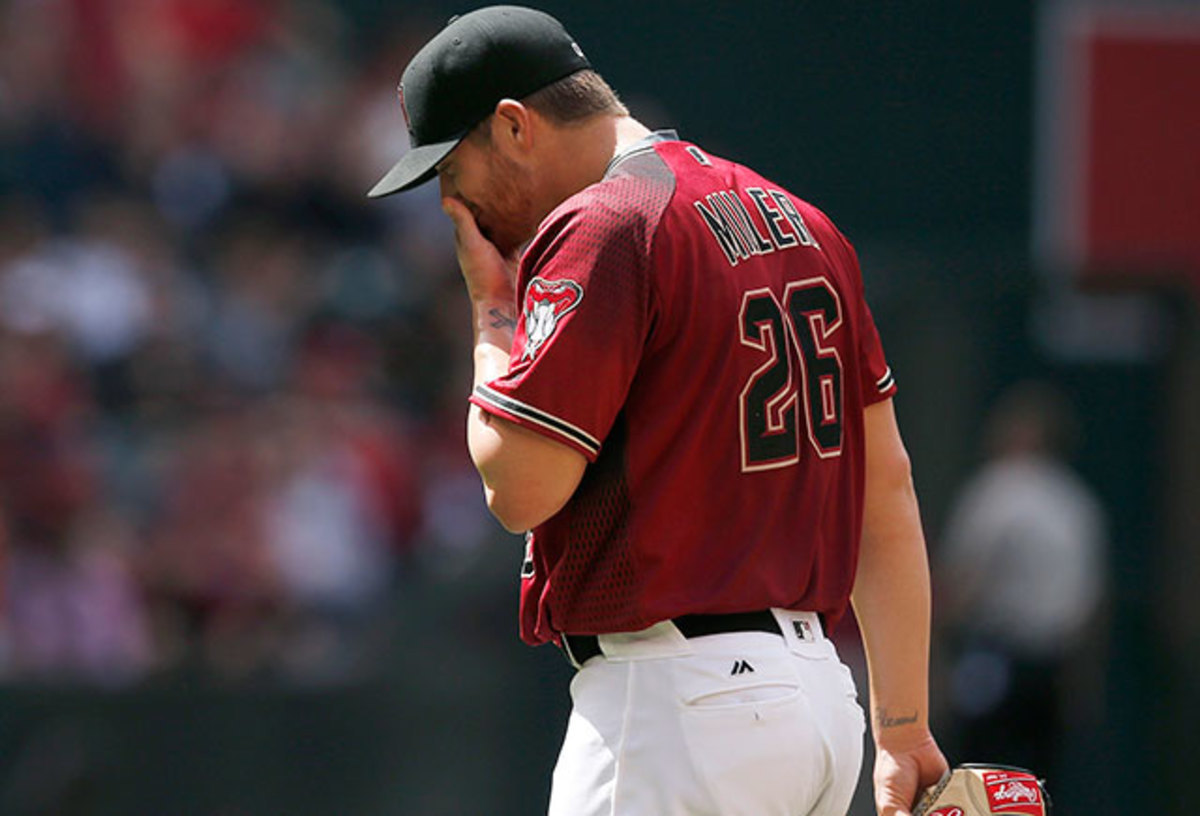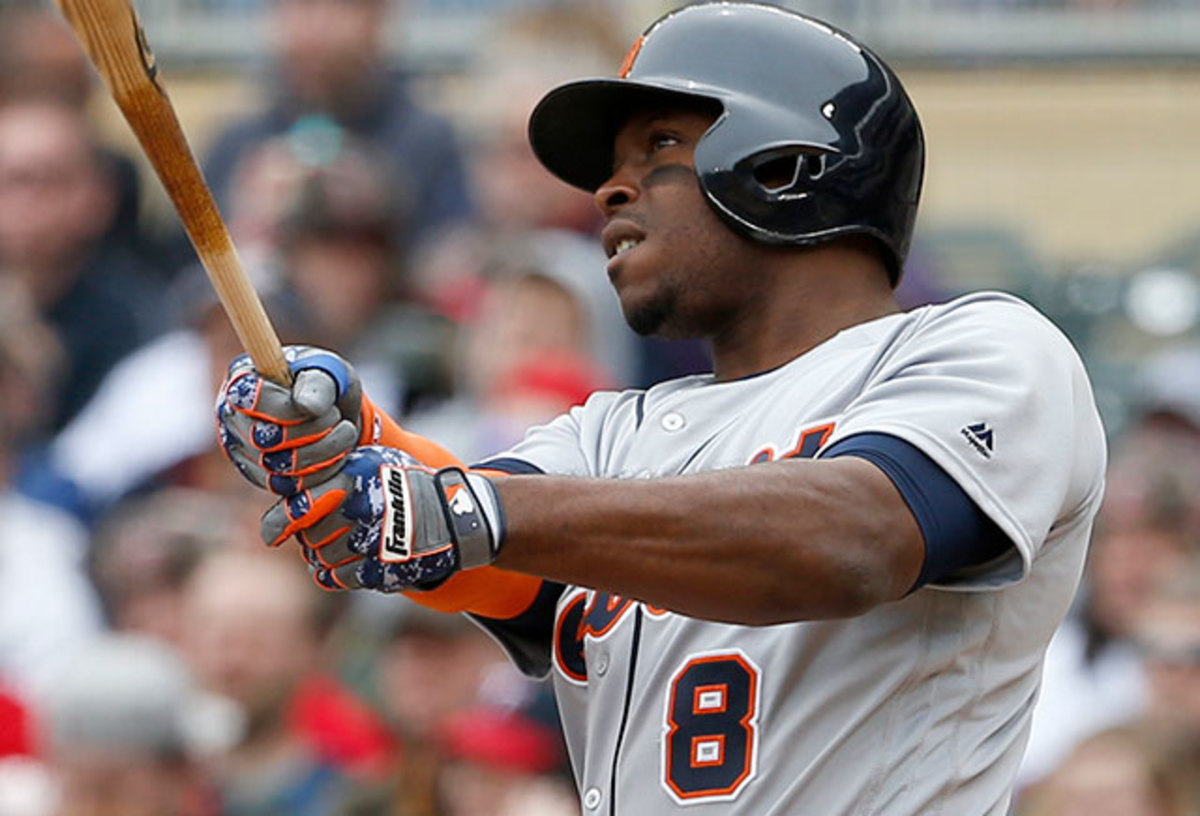The 30: Separating fact from fiction in this week's power rankings

Whether your interest lies with real teams or your fantasy team, the first few weeks of the season keep circling back to one key question: Is what we’re seeing real, or is it a mirage that’s bound to disappear as we get deeper into the season?
One tool that can help us separate fact from fiction is a look at each team’s strength of schedule. A month into the season, the standings can still be skewed by certain teams fattening up on creampuff opponents as others struggle against the best in the league.
The Reds and Diamondbacks have both scuffled while trying to navigate brutal matchups. Some dormant Tigers bats have finally woken up, though that’s come against some shaky opponents. The Mets, meanwhile, look dominant again, and that might be due to both copious talent and a cakewalk early-season slate.
Clear your calendars. It’s Week 4 of The 30.
Best Imitation of Steven Souza Jr.: Steven Souza Jr.
On the final day of the 2014 regular season, then-Nationals starter Jordan Zimmermann twirled a no-hitter. As brilliantly as the righthander pitched that day, he wouldn’t have pulled off that impressive feat if not for Steven Souza Jr.'s heroics. With two outs in the bottom of the ninth inning, Christian Yelich smacked a pitch toward the gap in left-center, a drive that looked destined to scuttle the no-no.
No, no, said Souza:
Fast-forward to the fourth inning of Wednesday’s game. Chris Davis smokes a long drive into the gap in right-center and appears to have a sure double. Souza has other ideas:
The side-by-side view of both catches tells the story. And Souza has now made his case for early catch of the year honors.
• MORE MLB: Enforcement of new 'Utley Rule' on slides still inconsistent

Murderers’ Row
Facing a passel of tough opponents, the Reds are struggling badly.
30. Atlanta Braves (6–18 record, minus-46 run differential, last week: 30)
29. Minnesota Twins (7–18, minus-31, LW: 29)
28. San Diego Padres (9–16, minus-29, LW: 27)
27. Milwaukee Brewers (9–15, minus-39, LW: 26)
26. Cincinnati Reds (10–15, minus-52, LW: 25)
25. Houston Astros (8–17, minus-32, LW: 20)
24. New York Yankees (8–15, minus-31, LW: 21)
No one expected much from the Reds this season, not after a 98-loss 2015 campaign that left the team in last place. Still, when Cincinnati started the season by winning five out of six, you could maybe squint and see a team that might be semi-respectable this year.
Turns out, not so much. The Reds have dropped 14 of 19 since that hot start, are just a half-game out of last place and own the worst run differential in all of baseball.
While a lack of talent explains a lot of that tailspin, the Reds can point to another factor that’s shoved them down the standings: Through the first four weeks of the season, they’ve played the toughest schedule in baseball—by far. According to Baseball-Reference’s strength of schedule rankings, Cincinnati’s opponents collectively have been 1.1 runs better per game than the average major league club.
MLB April All-Stars: Harper, Machado, Syndergaard lead month's best
For a team that last year broke the all-time record for consecutive starts by rookie pitchers and has handed out 22 of the team’s 25 starts this year to hurlers 26 or younger (plus three to Alfredo Simon for innings eating/batting practice), there’s no sense fretting about any of that. This season, like last, is about rebuilding, not actually contending with the class of the NL Central. The most important thing the Reds can do right now is evaluate the players they have and figure out which ones could be useful pieces on the next contending club.
Cincinnati is going to have to make that call on Billy Hamilton some time soon. The Reds’ centerfielder will be arbitration-eligible for the first time at the end of this season, and he’s offered very little evidence to suggest he can hit in the big leagues.
Hamilton broke into the majors in 2013 and has now amassed more than 1,100 plate appearances at the highest level. Over that span, Hamilton ranks as the second-worst hitter in all of baseball with as many times at bat (out of 246 players), ahead of only banjo-hitting infielder Alexi Amarista. He’s actually gotten worse so far this year. He’s hitting the ball hard less often than all but four NL hitters with as many plate appearances. He ranks among the league leaders in infield popup frequency. He’s dealt with some nagging injuries in the early going, including a thumb injury, but given the long-standing concern that Hamilton wouldn’t hit enough to justify keeping his lightning-fast legs in the lineup, it’s tough not to fret over his year-to-date batting line: an abysmal .220/.281/.356, roughly in line with his feeble career numbers.
The Reds will keep rolling with Hamilton, because the speed and defensive range are tantalizing, and because even halfway-respectable hitting would be enough to justify sticking with him longer-term. It’s just that right now, halfway respectable seems a long way off.

Pitch Imperfect
Zack Greinke and Shelby Miller have been big disappointments so far for the sub-.500 Diamondbacks.
23. Arizona Diamondbacks (12–15, minus-21, LW: 16)
22. Miami Marlins (12–12, minus-11, LW: 28)
21. Tampa Bay Rays (11–13, minus-8, LW: 22)
20. Colorado Rockies (12–12, minus-6, LW: 19)
19. Oakland A’s (13–13, minus-9, LW: 18)
18. Los Angeles Angels (12–13, minus-10, LW: 23)
17. Cleveland Indians (10–12, plus-5, LW: 10)
16. Philadelphia Phillies (15–10, minus-16, LW: 24)
15. Toronto Blue Jays (12–14, plus-2, LW: 11)
Last year, the Diamondbacks scored more runs than any other NL team, save for the Coors Field-enhanced Rockies. Unfortunately, their starting pitchers also allowed more runs than all but four teams: the hapless Reds, the Brewers, the Phillies and those same Rockies.
So the D-Backs spent their winter loading up on starting pitching. First, they broke the bank for Zack Greinke, throwing a six-year, $206.5 million contract at him. Then they sent a king’s ransom of young talent to Atlanta, bringing back Shelby Miller. With those two talented righthanders on board, the goal was for Arizona to vault back into contention, led by a revamped rotation.
With April in the books, the Diamondbacks’ offense hasn’t been quite as potent, though it does rank second in the NL in home runs. The rotation, meanwhile, has been … much worse, actually. Arizona’s starters have posted a collective 5.66 ERA, worse than any other starting five, except the terrible Brewers (6.39).
Here too, you can blame some of that on schedule. The Diamondbacks have played the fifth-toughest collection of opponents so far this year, per Baseball-Reference. For instance, the two best teams on that schedule, the Cubs and Pirates, grabbed five out of seven against the Snakes. Still, schedule (and Chase Field’s own hitter-friendly backdrop) can only explain so much. Two of the biggest reasons the Diamondbacks sit below .500 are their two big off-season splurges, Greinke and Miller.
The True Story: Rockies' Trevor Story cools off, but future is bright
Six starts into his Arizona career, Greinke already has two disastrous starts under his belt. Facing the Rockies in the opener, he allowed seven runs on nine hits (including three home runs) in four innings. He ceded seven more runs on 11 hits over 6 2/3 innings, surrendering two more home runs, against the Cardinals on April 25. Some of Greinke’s peripheral numbers do look strong, including 32 strikeouts against just seven walks over 37 2/3 innings. But he’s also allowed 47 hits over that span, with opponents making far more contact on pitches in the zone than they have in years. The hope is that Greinke’s .347 batting average on balls in play allowed falls to something much closer to his career mark of .299, and that his seven quality innings against Colorado on Saturday could portend better results soon. Holding opponents below a .405(!!!) average against Greinke’s fastballs would be a great place to start; they batted a microscopic .202 against them last year.
Miller, on the other hand, has been irredeemably bad. He’s lasted no more than two innings in two of his first six starts. His 8.49 ERA and atrocious 16.5% walk rate both rank among the worst in baseball. He’s served up six home runs in 23 1/3 innings, also ranking among the worst marks in the league. Miller linked his early-season problems to a mechanical flaw and vowed to fix it. But we’re now two starts past that self-realization, and he’s allowed eight runs and 17 base runners in the 8 2/3 innings since.
Advanced projection systems were already bearish on the Diamondbacks heading into the season, and a fractured elbow for star centerfielder A.J. Pollock made the odds of a playoff run even longer. If the team’s top two starters don’t recapture something close to their old form, this could become a truly ugly season in the desert.

Upton Here
A weekend awakening for a big-fish free agent could give the surprising Tigers a big push.
14. Los Angeles Dodgers (13–13, plus-9, LW: 4)
13. San Francisco Giants (13–13, plus-8, LW: 12)
12. Seattle Mariners (13–11, plus-21, LW: 15)
11. Texas Rangers (14–11, plus-13, LW: 13)
10. Detroit Tigers (14–10, plus-17, LW: 17)
9. St. Louis Cardinals (12–13, plus-34, LW: 5)
8. Kansas City Royals (13–11, minus-1, LW: 3)
7. Baltimore Orioles (14–10, plus-16, LW: 7)
6. Boston Red Sox (15–10, plus-22, LW: 14)
5. Pittsburgh Pirates (15–10, plus-18, LW: 9)
The optimism surrounding the Tigers in some circles seemed confusing from the start. Yes, Mike Ilitch splashed his vast pizza fortune around this off-season, spending big bucks for free-agent All-Stars Jordan Zimmermann and Justin Upton. But those players took the place of David Price and Yoenis Cespedes, who might be even better. New GM Al Avila moved aggressively to address the team’s bullpen woes, but you can never know for sure how that might go. The rest of the roster featured much of the same front-line talent, but also multiple holes that didn’t seem to have been properly addressed.
So when the Indians swept the Tigers in Detroit (and outscored them 18–5), you wondered if their resulting 8–9 record might be a sign of the mediocrity to come for the rest of the year. A 6–1 week later, and things look a little brighter—doubly so if this is the start of an Upton revival.
Inside Dee Gordon's PED ban, and what real penalty should be
You couldn’t have dreamed up a more atrocious start to the season than Upton’s. Through his first 21 games, the normally fearsome slugger hit an awful .198/.222/.279. His power vanished, with just one home run. Scarier still was his batting eye. Known for his strong plate discipline, Upton struck out 36 times and walked just three times in 90 plate appearances. Then Upton went nuts: In three weekend games, he banged out out seven hits in 13 at-bats, scoring four runs, knocking in three and finally connecting on his second homer of the year.
So here’s the question: Should we feel heartened to see Upton returning to his raking self and expect him to return to vintage form? Or was his weekend outburst the result of facing Minnesota’s lousy pitching staff, making the early breakdown of his batting eye something to keep sweating about?
We might soon get a better read on both Upton and the Tigers. Detroit’s next four series will come against decent to excellent teams, with the Indians, the first-place Rangers and Nationals and the fast-starting Orioles all on the docket. A passel of tough starters lie ahead too, with Cole Hamels joining tough righthanders Corey Kluber, Max Scherzer, Stephen Strasburg and Joe Ross on the schedule.
The Tigers have played the seventh-easiest schedule in the majors so far. If they get through these next 13 games in good shape, they’ll start to look more like legitimate contenders.
Confort Zone
Led by their phenom leftfielder, the Mets ripped off eight wins in a row and look elite again.
4. New York Mets (15–8, plus-36, LW: 8)
3. Washington Nationals (17–7, plus-38, LW: 2)
2. Chicago White Sox (18–8, plus-25, LW: 6)
1. Chicago Cubs (17–6, plus-78, LW: 1)
If there were one team that you might have picked to win the NL pennant this year aside from the Cubs, you probably would have gone with the Mets. After all, Queens’ finest had won the pennant last year, and they looked potentially stronger heading into this season, with full seasons of Noah Syndergaard, Yoenis Cespedes and Steven Matz in the offing. Savvy Mets fans knew that another player could play a big role in getting the Mets back to the World Series, and maybe even winning it this time.
Michael Conforto is making those fans look awfully prescient. You wondered how much the 23-year-old leftfielder could improve after his terrific 56-game major league debut last year, one that saw him hit an excellent .270/.335/.506—numbers that made him 34% better than the average hitter after adjusting for Citi Field’s pitcher-friendly dimensions. He’s cranked those numbers much higher this season, spiking his line to an eye-popping .342/.418/.633.
Conforto is tied for the NL lead with 11 doubles, banging out two-baggers in six straight games last week to tie an all-time franchise record. Pick virtually any measure of hitting prowess, and Conforto has improved considerably from last season, in some cases positioning himself among the early league leaders. That includes a higher hard-hit rate, higher walk rate, a lower swing-and-miss rate and fewer swings on pitches out of the zone and a higher contact rate.
Rich Hill's journey back to being a successful MLB starter full of curves
Manager Terry Collins has taken notice. Of Conforto’s 280 career plate appearances heading into Sunday’s game, the sweet-swinging sophomore had seen just 27 times at bat against lefthanded pitchers. Even granting a schedule fairly light on lefties so far this year, this looked like a curious way to handle such a talented hitter, especially with Collins having elevated Conforto into the lineup’s three-hole, a key spot for most managers (even if it’s not the best place to put a top bat, statistically speaking). So what did Conforto do when given the starting assignment Sunday afternoon against a lefty? He went 0 for 5 with three strikeouts, unfortunately.
Ah, but here’s the rub: That ugly performance came primarily against Madison Bumgarner, who’s one of the best pitchers on the planet and also a straight-up assassin against lefty hitters. The best approach here might be a middle ground, with the Mets using the superior depth they have this year as compared to the same point last season to give Conforto a few days off against the toughest lefties, keeping valuable reserves like Juan Lagares engaged and building Conforto’s confidence. The hope would be that Conforto would get better against southpaws with more reps and eventually grow comfortable enough to present a formidable challenge against even the Bumgarners and Kershaws of the league. Even if they do continue to take it slow with him against lefties, though, Conforto has been an absolute beast against righties, putting the start of his career in rarefied air:
In other words, play the schedule you’re dealt. In the Mets’ case, that’s been the fifth-easiest in the majors to date. But given the many games that await against the hapless Braves (and maybe the Marlins and Phillies, depending on how much they’ve really improved this year), Conforto and friends might get many more soft landings as they pursue the pennant again in 2016.
